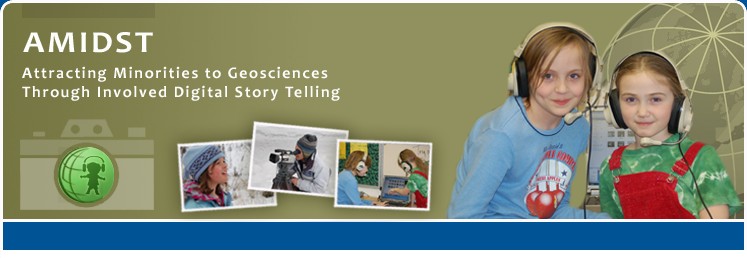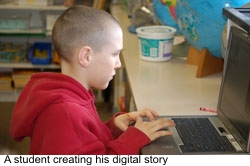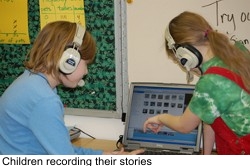

|
Digital Story Telling
Digital Story TellingStory telling is a traditional method of relaying information among Alaska natives, and is a well respected resource in many native cultures. Digital storytelling offers a powerful means to combine traditional literacy, technological skill building, and content area learning (Prensky, 2001), and provides a very natural way to get students enthused about any content area (in this case, geoscience). Digital storytelling can be described as using personal digital technology to combine a number of media into a coherent narrative (Ohler, 2006b).Our ApproachOne form of digital story telling that we used (with the particpants of Joy elementary school) in this project is called computer-based digital stories. These digital stories are typically short (2-4 minute) quasi-movies that consist of a series of images accompanied by music and a voice-over narration. Images consist of digital photos, scanned objects, graphical illustrations such as scientific figures and graphs, as well as original drawings. Student stories are recorded using a movie editing program, such as iMovie on the Mac, or MovieMaker on the PC. Performance is on-screen, via DVD or one of the many kinds of web distribution available, including webstreaming and podcasting.  Future in an Academic EnvironmentIf digital storytelling is to be considered viable as a pedagogical tool over the long term, then students need to be required to use it to tell academic stories that employ analysis and reflection about content area subject matter within the story narrative. Ideally, academic digital stories should be a blend of report and story, engaging both the intellect and the emotions. In many ways, this is no different than effective term papers, which typically require students to convince readers of a particular point of view through the use of research and logical analysis, as well as artful and persuasive language.For more information on digital story telling visit http://storyconcepts.blogspot.com/ |